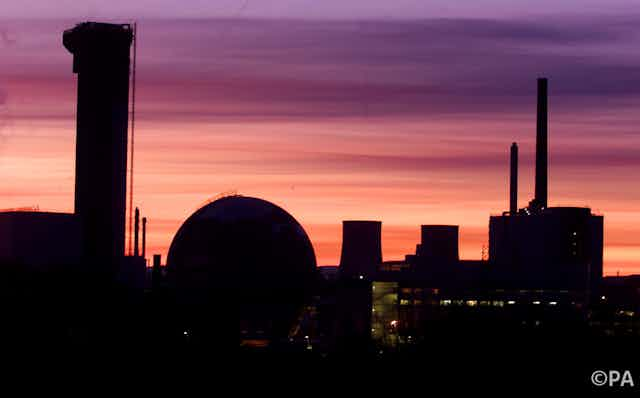The only source of energy that can meet global demand while avoiding greenhouse gas emissions is nuclear power. But our perception of nuclear power is coloured by issues of safety, radiotoxic waste, and the threat of nuclear proliferation.
Yet there is a safer alternative to current nuclear technology: new reactor designs inherently safer than conventional reactors, that produce little waste, and are proliferation resistant. The new designs allow us to reuse our legacy of radiotoxic waste as fuel.
The secret is a shiny, silver-coloured element called thorium, and it’s not new. Thorium has long been regarded as a potential nuclear fuel. Unconventional prototypes such as the Oak Ridge thorium molten salt reactor (MSR) in the US were demonstrated in the 1960s. Since then the US, Germany and Britain have all used thorium fuel to produce electricity in conventional reactors. The technology is proven.
Thorium is four times more plentiful than uranium, about as common as lead. A mere 5,000 tons of thorium could meet the entire planet’s energy needs for a year. Known deposits alone would provide enough energy for 10,000 years. Unlike conventional uranium fuel, thorium is burnt, leaving much less radiotoxic waste and almost no plutonium. It is often claimed that thorium’s inability to generate plutonium for weapons was the reason it was abandoned during the Cold War.
There is considerable support for thorium as a nuclear fuel. With uranium or plutonium additives it could be used in current nuclear reactors with only minor modifications. And it brings the opportunity to exploit the latest innovations in reactor design. A molten salt reactor, for example, is meltdown-proof because the fluoride-based fuel is already molten. Theoretically self-regulating, the design might suit small modular units for remote communities, generating electricity or heat.
Another approach is the accelerator-driven subcritical reactor (ADSR). In this still theoretical design, high energy protons are fired at atoms of heavy metals such as lead, chipping off individual neutrons. The thorium fuel absorbs these free, high-energy neutrons and is converted into uranium. This uranium in turn absorbs more neutrons and splits (“fissions”), releasing energy.
The ADSR is extremely safe as the thorium-uranium process is “subcritical”. That is, if the accelerator is switched off the reactor is fail-safe, unable to sustain a chain reaction. Furthermore, the high-energy neutrons it generates can break down the toxic radioactive waste from conventional reactors, turning our stockpiles of nuclear waste into more fuel.
India, with its substantial deposits of thorium, is now pursuing thorium-based nuclear technology using a thorium-plutonium mix. In Japan, research is underway to resurrect the thorium molten salt concept. Norway is considering the potential for its very substantial thorium reserves to provide energy for the years after North Sea gas and oil. China, which produces great quantities of thorium as a toxic by-product of mining rare earths, is investing heavily in molten salt reactors and ADSRs.
And in the UK? Unfortunately there is no coherent government, industry or academic stance. Yet the UK is rich in engineering and materials expertise, reactor and accelerator design.
Even a modest investment in an advanced thorium research and development programme could provide the UK with a unique opportunity to build and sustain a multi-billion pound nuclear industry based upon safe, inexhaustible, low waste and proliferation-resistant nuclear power generation. As well as providing national energy security, it would deliver the means for the UK to compete in existing nuclear markets, and open new international markets that are closed to uranium and plutonium-based reactors.
Academics, businesspeople and social reformers alike are working towards a consensus on a thorium-fuelled nuclear future. But with no government support or leadership, and a nuclear industry wedded to existing uranium-based designs it’s likely the UK will miss yet another golden, or in this case silver, opportunity.
Part of our Nuclear Future series:
Tough decisions needed to keep Britain’s lights on
Renewables blossom in Germany’s post-nuclear vision
Thorium could be the silver bullet to solve our energy crisis
How 20th century atomic science played on our hopes and fears

